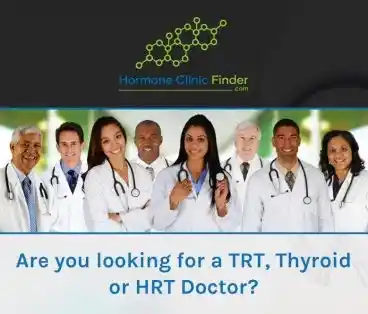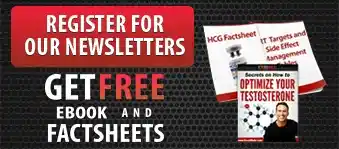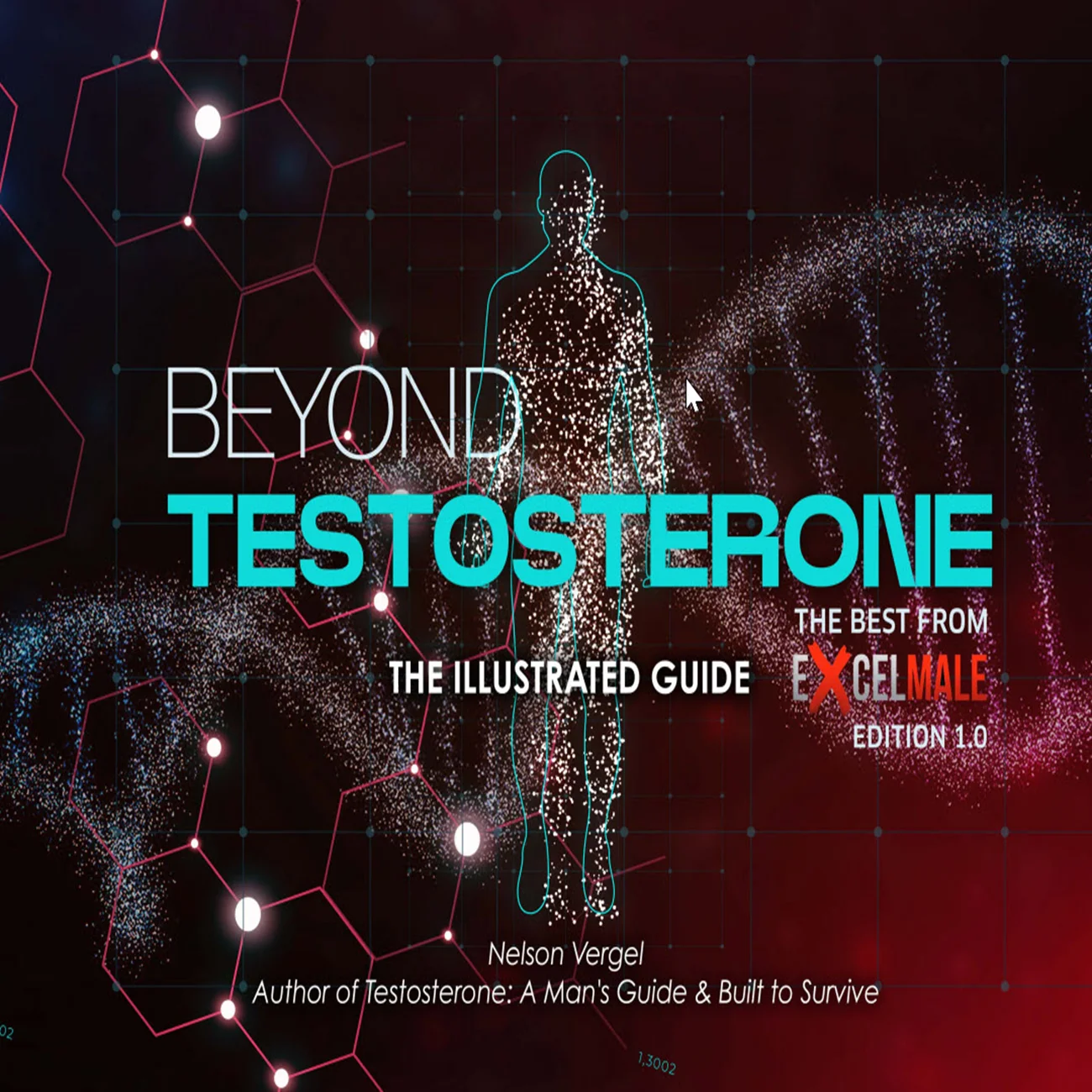Experiencing delayed orgasm or anorgasmia on TRT? Many men on testosterone therapy report difficulty reaching climax despite normal erections and libido. This frustrating issue is more common than most realize—and it's often treatable once you identify the underlying cause.
This guide covers the main factors behind delayed orgasm in men: estrogen imbalances (both high and low E2), medications (especially SSRIs and finasteride), neurological factors, and psychological components. We'll discuss diagnostic approaches and treatment options including hormone optimization, medication adjustments, and other interventions that have helped men in our community.
Briefing: Male Delayed Orgasm and Anorgasmia
Executive Summary
This document synthesizes current knowledge on male Delayed Orgasm (DO) and Anorgasmia (AO), complex and often underreported sexual dysfunctions with a significant impact on quality of life. DO is defined as an increased latency to orgasm despite adequate stimulation, while AO is the complete absence of orgasm. The etiologies are multifactorial, spanning medication-induced side effects, psychogenic issues, endocrine imbalances, and genitopelvic dysesthesia.
The most critical component of patient evaluation is a thorough history (medical, sexual, psychosocial) and physical examination. Diagnosis is guided by this comprehensive intake, supplemented by hormonal laboratory testing. A significant challenge in management is the lack of any FDA-approved pharmacotherapies or standardized treatment plans. Consequently, treatment is highly individualized and often multidisciplinary, involving medication adjustments, sex therapy, and the off-label use of various drugs. Selective serotonin reuptake inhibitors (SSRIs) are the most common medication-related cause, while other key factors include psychogenic triggers, low testosterone, and hyperprolactinemia. Promising but not conclusively proven pharmacotherapies include cabergoline, bupropion, and amphetamine/dextroamphetamine. Future progress hinges on establishing a universal definition for DO/AO and developing novel, targeted therapies based on a deeper understanding of its molecular pathogenesis.

--------------------------------------------------------------------------------
I. Definitions and Classifications
Male orgasmic dysfunction exists on a spectrum, with premature ejaculation at one end and Delayed Orgasm (DO) and Anorgasmia (AO) at the other. While orgasm and ejaculation are distinct physiological events, the terms Delayed Ejaculation (DE) and DO are often used interchangeably in clinical literature.
• Delayed Orgasm (DO): Defined as an increased latency of orgasm despite adequate sexual stimulation and desire.
• Anorgasmia (AO): Characterized as the absence of orgasm and considered the most extreme presentation of DO.
Official Definitions
There is no single standardized definition, leading to variations across diagnostic manuals:
Time Threshold
The Third International Consultation on Sexual Medicine defines a time threshold for DO based on intravaginal ejaculation latency time (IELT). A multinational survey by Waldinger et al. established a median IELT of 5.4 minutes. It is extrapolated that DO would represent an IELT two standard deviations above this, equating to approximately 20–25 minutes.
Sub-Categorization
DO can be further classified as:
• Lifelong/Primary: Present since the first sexual encounter.
• Acquired/Secondary: Developed after a period of normal orgasmic function.
• Generalized: Occurs in all situations.
• Situational: Occurs only with specific stimuli, partners, or situations.
II. Anatomy and Physiology
Male sexual function involves a complex interplay of psychosocial, neurogenic, vascular, and endocrine factors. Ejaculation and orgasm are two separate but typically simultaneous processes.
• Ejaculation: A two-phase process:
1. Emission: Seminal fluid from the prostate, seminal vesicles, and vas deferens passes into the posterior urethra. This phase is dependent on autonomic innervation.
2. Expulsion (Antegrade Ejaculation): Passage of seminal fluid from the posterior urethra to the external meatus, regulated by contractions of striated pelvic floor muscles.
• Orgasm: Occurs secondary to pressure buildup in the posterior urethra, caused by the closure of the bladder neck and external urethral sphincter, combined with contractions of periurethral musculature.
Neuroanatomy of Orgasm
Functional neuroimaging studies have identified key brain regions involved in orgasm.
• Cortical Activation: A meta-analysis showed activation in the lateral occipitotemporal, parietal, orbitofrontal, medial prefrontal, insular, and anterior cingulate cortices in both heterosexual and homosexual men.
• PET Studies: Show increased activity in the occipitotemporal lobes, anterior cingulate, bilateral substantia nigra, and other areas during orgasm, with a corresponding decrease in regional cerebral blood flow in the prefrontal cortex.
• Findings in Men with DO: One study observed increased activation in the right fusiform gyrus. The neurotransmitter receptors in this region—including adenosine, cholinergic, cannabinoid, and dopamine receptors—are considered potential targets for new pharmacotherapies.
III. Epidemiology and Pathophysiology
Epidemiology
The true prevalence of DO/AO is difficult to determine because studies often do not separate difficulties with orgasm from ejaculation, and embarrassment may prevent men from seeking treatment.
• Kinsey et al. found a prevalence of primary AO in 15 out of 10,000 participants.
• Nathan et al. found the prevalence of inhibited male orgasm to be 5%.
• Corona et al. observed a 7.3% prevalence of DE and/or DO in one study of 2,652 men and a 4.4% rate in another study of 2,437 men.
Pathophysiology and Etiologies
DO is a multifactorial disorder with several identified causes. A study by Teloken et al. identified the most common etiologies for secondary DO as:
• Selective serotonin reuptake inhibitors (SSRIs): 42%
• Psychogenic factors: 28%
• Low testosterone: 21%
• Abnormal penile sensation: 7%
• Penile hyperstimulation: 2%
1. Endocrinopathies
• Testosterone Deficiency: Men with DO have been shown to have lower total and free testosterone levels compared to men with premature ejaculation or no ejaculatory dysfunction. The prevalence of testosterone deficiency in men with DO was 26%.
• Hyperprolactinemia: Increased prolactin (PRL) levels suppress testosterone production. PRL levels progressively increase when comparing men with premature ejaculation, no dysfunction, and DO, respectively.
• Thyroid Dysfunction: Hypothyroid patients often experience DO, while hyperthyroid patients often experience premature ejaculation. A study showed that IELT in hypothyroid men significantly decreased from 22 to 7 minutes after normalization of TSH levels.
2. Medications
Antidepressants and antipsychotics are the most common medications implicated in DO. SSRIs are particularly notable, as they stimulate prolactin-releasing factors, leading to hyperprolactinemia and subsequent testosterone suppression.
3. Psychogenic Factors
Psychogenic DO can result from fear, anxiety, relationship difficulties, or past trauma. Common triggers include childhood sexual abuse, repressive sexual education, general anxiety, or being widowed/divorced. One study found that among men undergoing timed intercourse for fertility, 5.92% experienced DO, and these men had significantly higher scores on the Beck Anxiety Inventory.
4. Penile Hyperstimulation and Sensation Loss
DO is associated with higher masturbatory activity. It is theorized that frequent masturbation can lead to penile sensation loss, which in turn requires more forceful stimulation. This cycle can result in an inability to achieve orgasm during partnered sexual activities that cannot replicate the necessary intensity.
5. Pelvic Surgery
Orgasmic dysfunction is a known risk of major pelvic surgeries. Reported rates of AO post-surgery are:
• Radical prostatectomy: 5–70%
• Radical cystectomy: 33–63%
• Colorectal surgeries: 0–52%
Preservation of orgasmic function is directly correlated with intraoperative nerve-sparing. After robotic-assisted prostatectomy, 90.7% of men with bilateral nerve-sparing preserved orgasmic function, compared to only 60.8% of men with non-nerve-sparing procedures.
IV. Patient Evaluation and Diagnosis
The most critical component of evaluation is a thorough history and physical examination.
History and Physical Exam
• History: Must cover medical, surgical (especially neurologic/pelvic), psychiatric, sexual, social, and religious history. It should delve into stressors, history of trauma, onset/duration of DO, and a full review of medications.
• Physical Exam: Should evaluate for signs of metabolic disorders (obesity), low testosterone (minimal body hair, muscular atrophy), and genitourinary abnormalities (testicular atrophy).
Laboratory and Adjunctive Testing
• Hormonal Evaluation: The mainstay of lab testing includes total and free testosterone, TSH, vitamin D, estradiol, and prolactin (PRL).
• Baseline Labs: A basic metabolic panel, HIV testing, and Hemoglobin A1c may be assessed as indicated.
• Adjunctive Testing: Tests like biothesiometry (to evaluate penile sensitivity) or pudendal somatosensory-evoked potential (SSEP) are available but not routinely indicated in clinical practice.
V. Treatment of DO/AO
There is no standardized, FDA-approved treatment for DO. Management is multidisciplinary and individualized, addressing biopsychosocial factors.
Foundational Treatments
1. Address Organic Causes: Before initiating other treatments, underlying conditions like testosterone deficiency or thyroid dysfunction should be managed. If DO is caused by medications, the prescribing physician should be consulted to adjust, decrease, or change the offending drug.
2. Sex Therapy: Recommended for all patients, either as monotherapy or in conjunction with other treatments. Approaches include:
◦ Sex education and cognitive-behavioral therapy (CBT).
◦ Enhancing psychological arousal through vibrators or vigorous thrusting.
◦ Masturbatory retraining to condition response to stimuli that can be replicated with a partner.
◦ Addressing psychological conflicts (e.g., fear of impregnation, control issues).
◦ Improving couple communication and destigmatizing the condition.
3. Penile Vibratory Stimulation (PVS): A vibrator is applied to the penile frenulum for up to 10 minutes. One study found that 72% of men with AO who used PVS had their orgasm restored on at least some occasions. Given its minimal risk, the AUA guidelines state that PVS may be recommended for interested patients, although conclusive evidence is lacking.
Pharmacotherapy
Although no drugs are FDA-approved for DO, several off-label pharmacotherapies have been studied. The choice of therapy should be guided by an informed patient-provider discussion about efficacy, side effects, and dosing preferences.
Invasive, Non-Pharmacological Therapies
Interventions such as intracavernosal injections of platelet-rich plasma or pudendal nerve release surgeries are not currently recommended due to a lack of validated studies and significant procedural risks.
VI. Conclusions and Future Directions
DO and AO are prevalent and distressing conditions whose management is hampered by a lack of standardized definitions and FDA-approved treatments. The cornerstone of care remains a comprehensive patient evaluation to identify underlying causes. Treatment is individualized and often requires a multidisciplinary approach combining sex therapy, behavioral modifications, and off-label pharmacotherapy.
Future progress in the field requires:
1. Developing a universal definition for DO and AO.
2. Establishing a standardized pathway for objective evaluation and diagnosis.
3. Conducting further research to elucidate the underlying molecular pathogenesis of orgasmic dysfunction, which could lead to the development of novel, targeted pharmacotherapies.
This guide covers the main factors behind delayed orgasm in men: estrogen imbalances (both high and low E2), medications (especially SSRIs and finasteride), neurological factors, and psychological components. We'll discuss diagnostic approaches and treatment options including hormone optimization, medication adjustments, and other interventions that have helped men in our community.
Briefing: Male Delayed Orgasm and Anorgasmia
Executive Summary
This document synthesizes current knowledge on male Delayed Orgasm (DO) and Anorgasmia (AO), complex and often underreported sexual dysfunctions with a significant impact on quality of life. DO is defined as an increased latency to orgasm despite adequate stimulation, while AO is the complete absence of orgasm. The etiologies are multifactorial, spanning medication-induced side effects, psychogenic issues, endocrine imbalances, and genitopelvic dysesthesia.
The most critical component of patient evaluation is a thorough history (medical, sexual, psychosocial) and physical examination. Diagnosis is guided by this comprehensive intake, supplemented by hormonal laboratory testing. A significant challenge in management is the lack of any FDA-approved pharmacotherapies or standardized treatment plans. Consequently, treatment is highly individualized and often multidisciplinary, involving medication adjustments, sex therapy, and the off-label use of various drugs. Selective serotonin reuptake inhibitors (SSRIs) are the most common medication-related cause, while other key factors include psychogenic triggers, low testosterone, and hyperprolactinemia. Promising but not conclusively proven pharmacotherapies include cabergoline, bupropion, and amphetamine/dextroamphetamine. Future progress hinges on establishing a universal definition for DO/AO and developing novel, targeted therapies based on a deeper understanding of its molecular pathogenesis.
--------------------------------------------------------------------------------
I. Definitions and Classifications
Male orgasmic dysfunction exists on a spectrum, with premature ejaculation at one end and Delayed Orgasm (DO) and Anorgasmia (AO) at the other. While orgasm and ejaculation are distinct physiological events, the terms Delayed Ejaculation (DE) and DO are often used interchangeably in clinical literature.
• Delayed Orgasm (DO): Defined as an increased latency of orgasm despite adequate sexual stimulation and desire.
• Anorgasmia (AO): Characterized as the absence of orgasm and considered the most extreme presentation of DO.
Official Definitions
There is no single standardized definition, leading to variations across diagnostic manuals:
| Source | Definition of Delayed Orgasm / Ejaculation | Definition of Anorgasmia |
| AUA Guidelines | Recognizes multiple terms (DE, DO) and often uses DE to refer to difficulties with both ejaculation and orgasm. | "The condition in which sexual climax cannot be reached via any means of stimulation." |
| DSM-V | "A marked delay in ejaculation or a marked infrequency of absence of ejaculation on 75–100% of all occasions of partnered sexual activity without the individual desiring delay, persisting for at least 6 months, and causing significant distress." | Does not provide a separate definition; distressing difficulties with orgasm are considered under the delayed ejaculation diagnosis. |
| International Classification of Diseases (ICD)-11 | "An inability to achieve ejaculation or an excessive or increased latency of ejaculation, despite adequate sexual stimulation and the desire to ejaculate." | "The absence or marked infrequency of the orgasm experience or markedly diminished intensity of orgasmic sensations." However, it states that in men, this is encompassed by the diagnosis of DE. |
Time Threshold
The Third International Consultation on Sexual Medicine defines a time threshold for DO based on intravaginal ejaculation latency time (IELT). A multinational survey by Waldinger et al. established a median IELT of 5.4 minutes. It is extrapolated that DO would represent an IELT two standard deviations above this, equating to approximately 20–25 minutes.
Sub-Categorization
DO can be further classified as:
• Lifelong/Primary: Present since the first sexual encounter.
• Acquired/Secondary: Developed after a period of normal orgasmic function.
• Generalized: Occurs in all situations.
• Situational: Occurs only with specific stimuli, partners, or situations.
II. Anatomy and Physiology
Male sexual function involves a complex interplay of psychosocial, neurogenic, vascular, and endocrine factors. Ejaculation and orgasm are two separate but typically simultaneous processes.
• Ejaculation: A two-phase process:
1. Emission: Seminal fluid from the prostate, seminal vesicles, and vas deferens passes into the posterior urethra. This phase is dependent on autonomic innervation.
2. Expulsion (Antegrade Ejaculation): Passage of seminal fluid from the posterior urethra to the external meatus, regulated by contractions of striated pelvic floor muscles.
• Orgasm: Occurs secondary to pressure buildup in the posterior urethra, caused by the closure of the bladder neck and external urethral sphincter, combined with contractions of periurethral musculature.
Neuroanatomy of Orgasm
Functional neuroimaging studies have identified key brain regions involved in orgasm.
• Cortical Activation: A meta-analysis showed activation in the lateral occipitotemporal, parietal, orbitofrontal, medial prefrontal, insular, and anterior cingulate cortices in both heterosexual and homosexual men.
• PET Studies: Show increased activity in the occipitotemporal lobes, anterior cingulate, bilateral substantia nigra, and other areas during orgasm, with a corresponding decrease in regional cerebral blood flow in the prefrontal cortex.
• Findings in Men with DO: One study observed increased activation in the right fusiform gyrus. The neurotransmitter receptors in this region—including adenosine, cholinergic, cannabinoid, and dopamine receptors—are considered potential targets for new pharmacotherapies.
III. Epidemiology and Pathophysiology
Epidemiology
The true prevalence of DO/AO is difficult to determine because studies often do not separate difficulties with orgasm from ejaculation, and embarrassment may prevent men from seeking treatment.
• Kinsey et al. found a prevalence of primary AO in 15 out of 10,000 participants.
• Nathan et al. found the prevalence of inhibited male orgasm to be 5%.
• Corona et al. observed a 7.3% prevalence of DE and/or DO in one study of 2,652 men and a 4.4% rate in another study of 2,437 men.
Pathophysiology and Etiologies
DO is a multifactorial disorder with several identified causes. A study by Teloken et al. identified the most common etiologies for secondary DO as:
• Selective serotonin reuptake inhibitors (SSRIs): 42%
• Psychogenic factors: 28%
• Low testosterone: 21%
• Abnormal penile sensation: 7%
• Penile hyperstimulation: 2%
1. Endocrinopathies
• Testosterone Deficiency: Men with DO have been shown to have lower total and free testosterone levels compared to men with premature ejaculation or no ejaculatory dysfunction. The prevalence of testosterone deficiency in men with DO was 26%.
• Hyperprolactinemia: Increased prolactin (PRL) levels suppress testosterone production. PRL levels progressively increase when comparing men with premature ejaculation, no dysfunction, and DO, respectively.
• Thyroid Dysfunction: Hypothyroid patients often experience DO, while hyperthyroid patients often experience premature ejaculation. A study showed that IELT in hypothyroid men significantly decreased from 22 to 7 minutes after normalization of TSH levels.
2. Medications
Antidepressants and antipsychotics are the most common medications implicated in DO. SSRIs are particularly notable, as they stimulate prolactin-releasing factors, leading to hyperprolactinemia and subsequent testosterone suppression.
| Drug | Drug Class | Reported Prevalence of DO/AO |
| Sertraline | SSRI | 11–67% |
| Citalopram | SSRI | 2–63% |
| Fluvoxamine | SSRI | 9–54% |
| Fluoxetine | SSRI | 24–75% |
| Paroxetine | SSRI | 20–54% |
| Escitalopram | SSRI | 4–30% |
| Venlafaxine | SNRI | 20–62% |
| Duloxetine | SNRI | 33% |
| Bupropion | Norepinephrine and dopamine reuptake inhibitor | 7–22% |
| Clomipramine | TCA | 15–92% |
| Imipramine | TCA | 5–21% |
| Amitriptyline | TCA | 10% |
| Phenelzine | MAOI | 11–40% |
| Tranylcypromine | MAOI | 40% |
| Haloperidol | Antipsychotic | 40–60% |
| Thioridazine | Antipsychotic | 40–60% |
| Methadone | Opioid | 14–81% |
3. Psychogenic Factors
Psychogenic DO can result from fear, anxiety, relationship difficulties, or past trauma. Common triggers include childhood sexual abuse, repressive sexual education, general anxiety, or being widowed/divorced. One study found that among men undergoing timed intercourse for fertility, 5.92% experienced DO, and these men had significantly higher scores on the Beck Anxiety Inventory.
4. Penile Hyperstimulation and Sensation Loss
DO is associated with higher masturbatory activity. It is theorized that frequent masturbation can lead to penile sensation loss, which in turn requires more forceful stimulation. This cycle can result in an inability to achieve orgasm during partnered sexual activities that cannot replicate the necessary intensity.
5. Pelvic Surgery
Orgasmic dysfunction is a known risk of major pelvic surgeries. Reported rates of AO post-surgery are:
• Radical prostatectomy: 5–70%
• Radical cystectomy: 33–63%
• Colorectal surgeries: 0–52%
Preservation of orgasmic function is directly correlated with intraoperative nerve-sparing. After robotic-assisted prostatectomy, 90.7% of men with bilateral nerve-sparing preserved orgasmic function, compared to only 60.8% of men with non-nerve-sparing procedures.
IV. Patient Evaluation and Diagnosis
The most critical component of evaluation is a thorough history and physical examination.
History and Physical Exam
• History: Must cover medical, surgical (especially neurologic/pelvic), psychiatric, sexual, social, and religious history. It should delve into stressors, history of trauma, onset/duration of DO, and a full review of medications.
• Physical Exam: Should evaluate for signs of metabolic disorders (obesity), low testosterone (minimal body hair, muscular atrophy), and genitourinary abnormalities (testicular atrophy).
Laboratory and Adjunctive Testing
• Hormonal Evaluation: The mainstay of lab testing includes total and free testosterone, TSH, vitamin D, estradiol, and prolactin (PRL).
• Baseline Labs: A basic metabolic panel, HIV testing, and Hemoglobin A1c may be assessed as indicated.
• Adjunctive Testing: Tests like biothesiometry (to evaluate penile sensitivity) or pudendal somatosensory-evoked potential (SSEP) are available but not routinely indicated in clinical practice.
V. Treatment of DO/AO
There is no standardized, FDA-approved treatment for DO. Management is multidisciplinary and individualized, addressing biopsychosocial factors.
Foundational Treatments
1. Address Organic Causes: Before initiating other treatments, underlying conditions like testosterone deficiency or thyroid dysfunction should be managed. If DO is caused by medications, the prescribing physician should be consulted to adjust, decrease, or change the offending drug.
2. Sex Therapy: Recommended for all patients, either as monotherapy or in conjunction with other treatments. Approaches include:
◦ Sex education and cognitive-behavioral therapy (CBT).
◦ Enhancing psychological arousal through vibrators or vigorous thrusting.
◦ Masturbatory retraining to condition response to stimuli that can be replicated with a partner.
◦ Addressing psychological conflicts (e.g., fear of impregnation, control issues).
◦ Improving couple communication and destigmatizing the condition.
3. Penile Vibratory Stimulation (PVS): A vibrator is applied to the penile frenulum for up to 10 minutes. One study found that 72% of men with AO who used PVS had their orgasm restored on at least some occasions. Given its minimal risk, the AUA guidelines state that PVS may be recommended for interested patients, although conclusive evidence is lacking.
Pharmacotherapy
Although no drugs are FDA-approved for DO, several off-label pharmacotherapies have been studied. The choice of therapy should be guided by an informed patient-provider discussion about efficacy, side effects, and dosing preferences.
| Drug | Dose | Mechanism of Action | Key Findings & Considerations |
| Cabergoline | 0.5 mg twice weekly | Dopamine receptor agonist | A retrospective review of 131 men showed 66.7% reported subjective improvement. Efficacious regardless of underlying etiology. |
| Bupropion | 150mg daily | Norepinephrine and dopamine reuptake inhibitor | Shown to improve sexual satisfaction and reduce time to orgasm in non-depressed men with DO. Has lower rates of sexual side effects. |
| Amphetamine/ dextroamphetamine | 5–20mg 1-2 h before sexual activity | CNS stimulant | Used for patients with wandering thoughts. In a pilot study of 17 men, 8 reported improved experience and 6 had reduced orgasmic latency. |
| Oxytocin | 16-24 IU intranasally | Acts on peripheral oxytocin/vasopressin receptors | Evidence is inconclusive. Case reports show success, but a randomized study of 102 men showed no significant difference in time to ejaculation. |
| Alpha-1 Agonists (e.g., Midodrine) | 5–30mg daily (Midodrine) | α-1 agonist | A study of midodrine in 185 men with spinal cord injury found 64.6% achieved ejaculation. A systematic review found a 21% overall success rate. |
| Other Medications | Varies | Various | Small trials or case reports exist for amantadine, cyproheptadine, yohimbine, buspirone, and bethanechol, mostly for antidepressant-induced sexual dysfunction. Evidence is insufficient for routine recommendation. |
Invasive, Non-Pharmacological Therapies
Interventions such as intracavernosal injections of platelet-rich plasma or pudendal nerve release surgeries are not currently recommended due to a lack of validated studies and significant procedural risks.
VI. Conclusions and Future Directions
DO and AO are prevalent and distressing conditions whose management is hampered by a lack of standardized definitions and FDA-approved treatments. The cornerstone of care remains a comprehensive patient evaluation to identify underlying causes. Treatment is individualized and often requires a multidisciplinary approach combining sex therapy, behavioral modifications, and off-label pharmacotherapy.
Future progress in the field requires:
1. Developing a universal definition for DO and AO.
2. Establishing a standardized pathway for objective evaluation and diagnosis.
3. Conducting further research to elucidate the underlying molecular pathogenesis of orgasmic dysfunction, which could lead to the development of novel, targeted pharmacotherapies.
Last edited:













